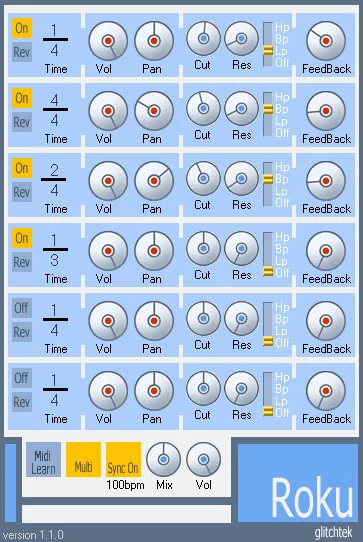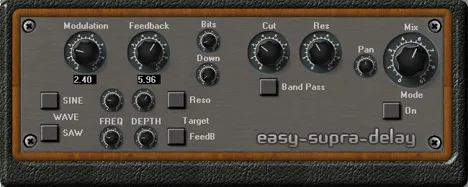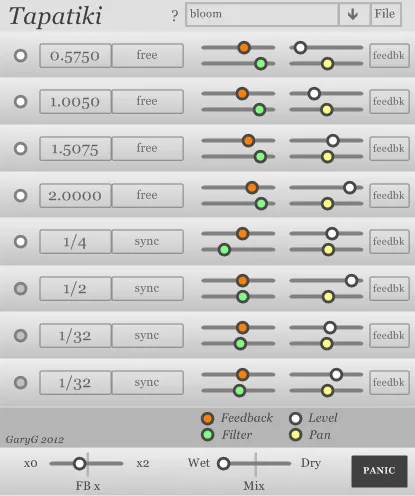Roku: The Ultimate Multi-Tap/Multi-Delay Effect for Your Music
Immerse yourself in the world of spatial experimentation with Roku, a unique plugin from Glitchtek that takes traditional delay effects to the next level. If you’re looking for a tool to create deep textures, rhythmic repeats, or atmospheric soundscapes, Roku offers the flexibility and control you need to realize your creative ideas. This plugin is not just another delay effect; it’s a powerful tool for shaping sound space.
Roku is designed with a focus on versatility and ease of use, yet it offers deep sound design capabilities. Its main strength lies in its flexible architecture, which allows you to work with multiple delays simultaneously, opening the door to complex and interesting rhythmic patterns and ethereal tails.
Key Features of Roku:
- Two operating modes: Multi-Tap or Multi-Delay.
- Maximum delay time of up to 5 seconds.
- Tempo Syncable.
- Integrated State Variable Filter with Low Pass, Band Pass, and High Pass modes.
- Ability to reverse delay buffers.
More about the operating modes:
The plugin offers two main operating modes that fundamentally change the approach to creating the effect:
- Multi-Tap: In this mode, Roku uses one main delay line, but with the ability to create up to six separate “taps.” This is ideal for creating rhythmic repeats based on a single delay time but with different volumes and panning, allowing you to easily build complex echo patterns from a single source.
- Multi-Delay: Here you get six completely independent delay lines. Each line can have its own time, feedback, and level settings. This mode opens up huge possibilities for creating multi-layered, complex spaces where different parts of the sound are processed differently, or for building a “wall” of sound with several dissimilar overlapping delays.
Time and Synchronization:
Roku supports a maximum delay time of up to 5 seconds, allowing you to create both fast “slapback” effects and very long atmospheric tails. An important feature is synchronization with the tempo of your project (Tempo Syncable). This ensures that your delays will always perfectly match the rhythm of the track, which is critical for creating musical and professional-sounding effects, especially in Multi-Tap mode.
Tone Shaping with a Filter:
An equally important part of Roku’s functionality is the integrated State Variable Filter. This versatile filter can operate in three modes: Low Pass, Band Pass, and High Pass. Applying a filter to the delay signal allows you to shape the tonal character of the effect, making it softer or sharper, highlighting certain frequency ranges, or removing unwanted “dirt.” The filter significantly expands the possibilities of sound design, allowing you to integrate the delay more organically into the overall mix or, conversely, make it a bright and noticeable element.
Unique Reversal Capability:
An additional interesting feature is the function of reversing delay buffers (Reversible Delay Buffers). This allows you to “play back” the delay sound backwards, creating unusual, surreal, and atmospheric effects that can add a unique texture to your sound. This feature opens up space for experimentation and the creation of truly original soundscapes, which are difficult to achieve with standard tools.
Conclusion:
Roku from Glitchtek is a flexible and powerful VST delay effect for Windows (32-bit) users that offers not only standard features but also unique functions such as two operating modes, an integrated filter, and buffer reversal. Whether you’re creating electronic music, rock, ambient, or any other genre, Roku can be a valuable addition to your effects arsenal, helping you shape space and add depth to your tracks. Try Roku and discover new horizons in the world of sound delays.



